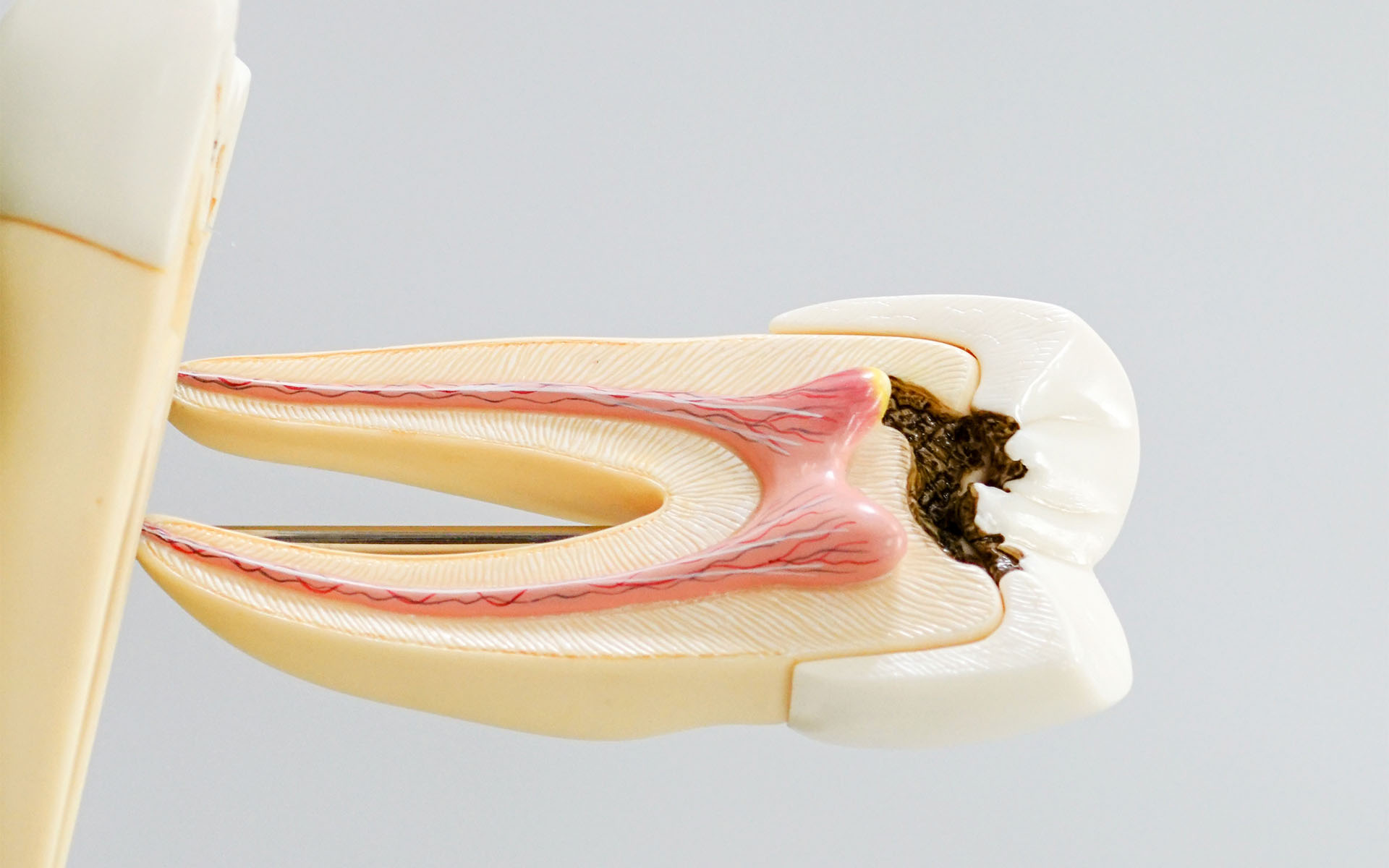
What is Pulp Necrosis? How Does It Develop?

Pulp necrosis occurs when the pulp, the innermost tissue of the tooth, dies. The pulp tissue is under the hard tooth enamel and extends towards the roots. It's made up of blood vessels, nerves, and other types of cells that help keep your teeth healthy.
When your tooth has a cavity or crack, bacteria can enter the pulp and cause inflammation (pulpitis). Your teeth have the ability to get rid of pulpitis on their own. But if left untreated, pulpitis will eventually lead to pulp necrosis. The stages of pulp necrosis are as follows;
- Reversible pulpit: If a dentist repairs and seals it, the tooth can heal on its own.
- Irreversible pulpitis: The inflammation progresses and the tooth cannot heal on its own.
- Pulp necrosis: The pulp tissue dies.
If the infection is not treated, it can spread beyond the pulp to your jaw, neck, and chest. These conditions can be very serious.
What Are the Symptoms of Pulp Necrosis?
The main symptoms of pulpitis and pulp necrosis are toothache and tenderness. The type of pain and tenderness you feel may vary depending on the stage:
- Reversible pulpit: You may have a short, sharp pain with a cold or sweets, but it passes quickly. Usually, you are not sensitive to heat.
- Irreversible pulpitis: This may be a low-grade pain, throbbing, or sharp pain lasting 30 seconds or longer after exposure to heat, cold, or sweets.
- Pulp necrosis : If the nerve dies, you may not be sensitive to heat, cold, or sweets. You may feel pain when your dentist gently taps your tooth.
What causes pulp necrosis?
The most common cause is a cavity in your tooth. Most people will develop a cavity (tooth decay) at some point in their lives. If the decay is not detected and repaired, it can allow bacteria to enter the pulp. Other reasons are:
- Cracked tooth: A crack in your tooth causes bacteria to enter the pulp.
- Dental procedures: Multiple or failed dental procedures can make a tooth more susceptible to pulp necrosis.
- Trauma : An injury to your tooth can expose the pulp. It can also cause tissue death by affecting blood flow to the pulp.
- Worn enamel: This can be the result of aggressive brushing or grinding your teeth. Worn areas can allow bacteria to enter your teeth.
How is Pulp Necrosis Diagnosed?
If your dentist suspects an infected pulp, they will likely refer you to an endodontist (a dentist who specializes in treating dental problems affecting the pulp). Dentists and endodontists use the following tests to diagnose pulp necrosis:
- Electric pulp test: In this test, an instrument sends a small electrical pulse to your tooth. If you can feel the stimulation, your pulp is alive. In pulp necrosis, you do not feel the electrical pulse.
- Heat or cold test : This is a test that involves touching your teeth with a hot or cold substance. Your dentist may also ask about any sensitivities you experience while eating or drinking.
- Tooth tapping: Your dentist will evaluate your response to tapping your tooth with an instrument.
- X-ray: A dental X-ray allows your dentist to see the structure of your teeth and jaw. Images may show tooth defects or infected pulp.
Pulp Necrosis Treated?
When pulp tissue dies, your dentist will need to remove it. This will prevent the infection from spreading and causing further damage. Other treatment methods are:
- Root canal : General dentists and endodontists perform root canal treatment. They remove the pulp, clean the root, then fill and seal the empty root canal. After a few weeks for your tooth to heal, your dentist will usually cover your tooth with a veneer.
- Tooth extraction: Your damaged tooth is extracted by a specialist. Afterwards, it will be beneficial for your general oral health to talk to your dentist about your implant or dental bridge options to fill the gap.
Your dentist or endodontist may prescribe antibiotics to help prevent the spread of infection, especially if you have to wait for the procedure. However, this is not the primary treatment.
How to Prevent Pulp Necrosis?
You can prevent cavities and keep your teeth healthy by doing the following:
- You should brush your teeth twice a day.
- You should floss every day.
- You should see your dentist for routine cleanings and checkups.
- You should immediately report any new dental symptoms, such as pain and tenderness, to your dentist.
- If you grind your teeth in your sleep, use a night guard to protect your teeth.